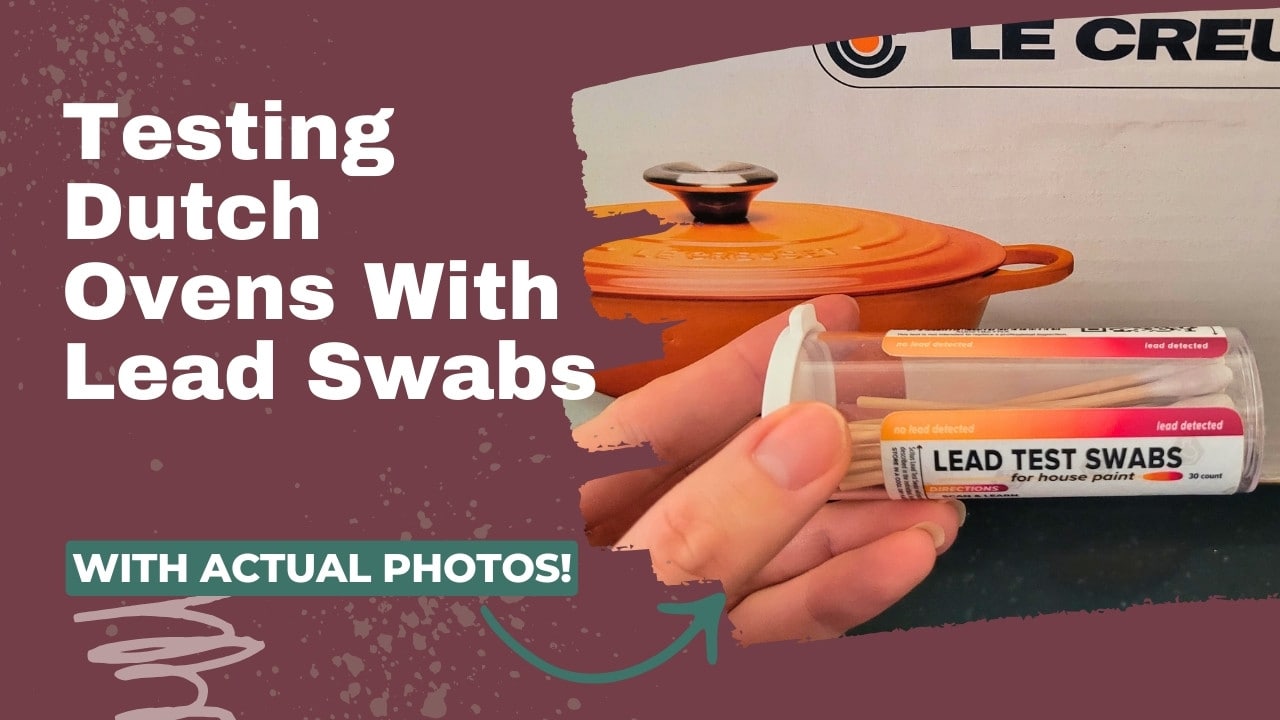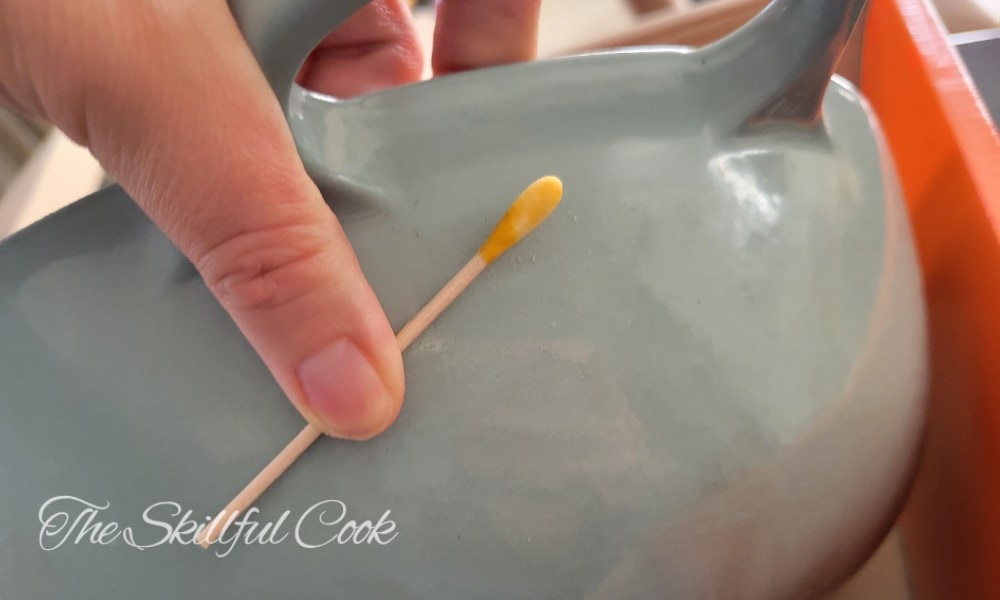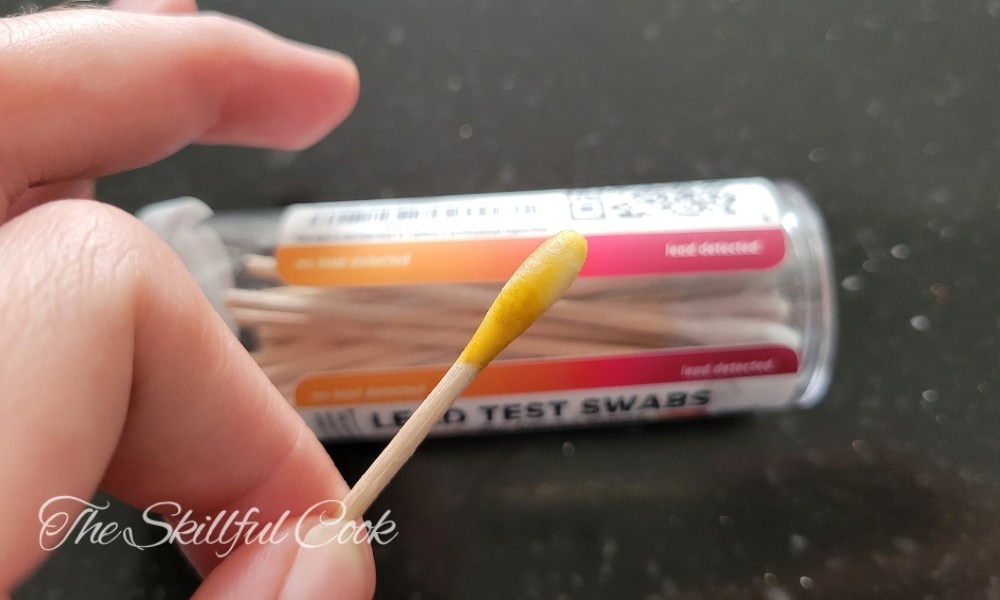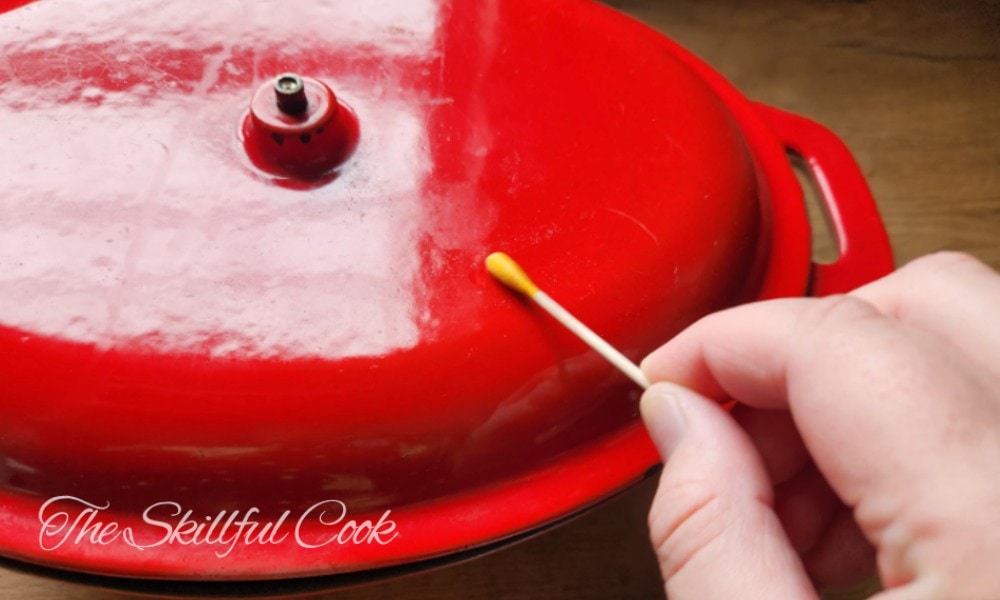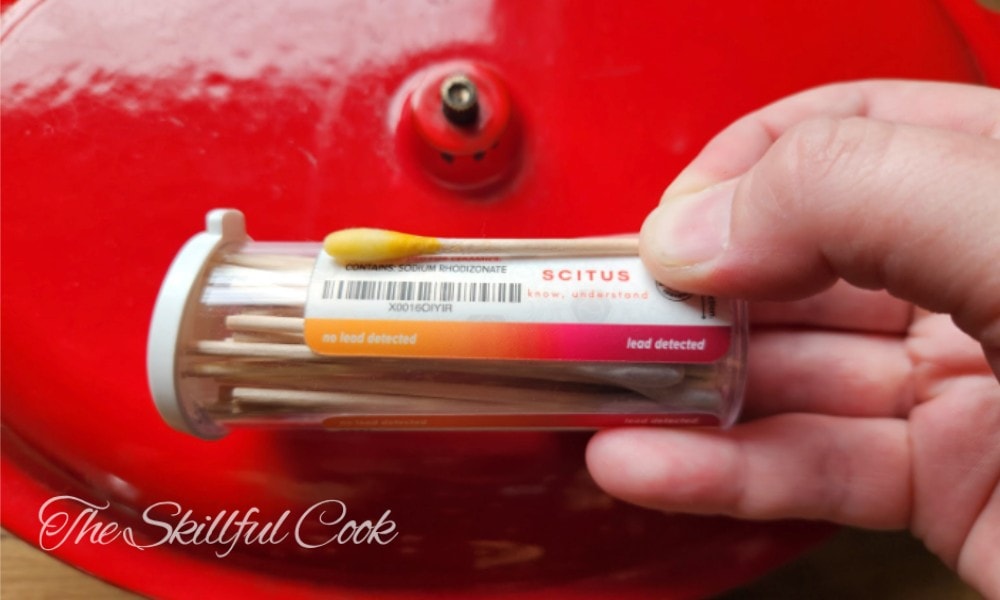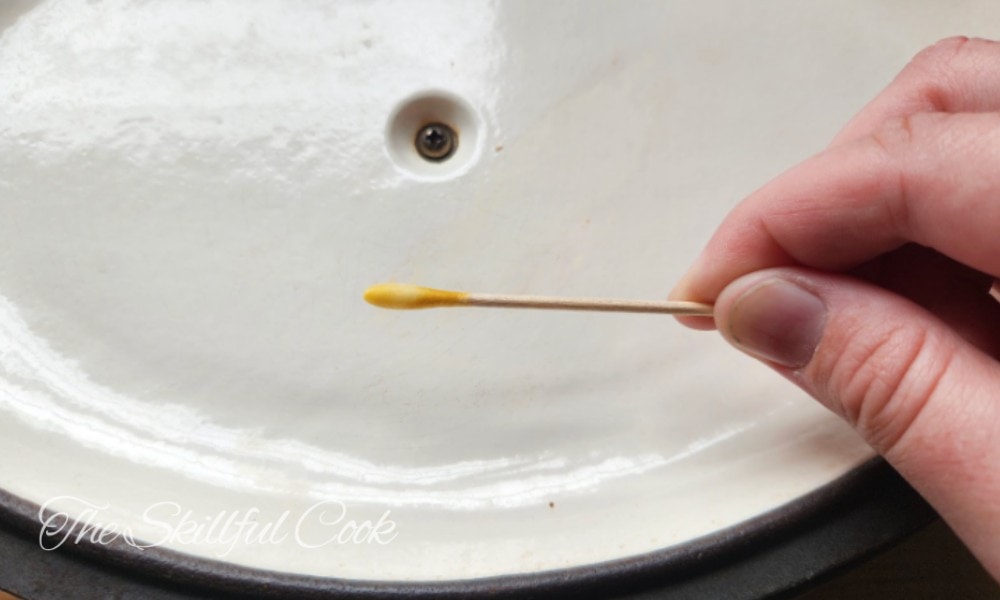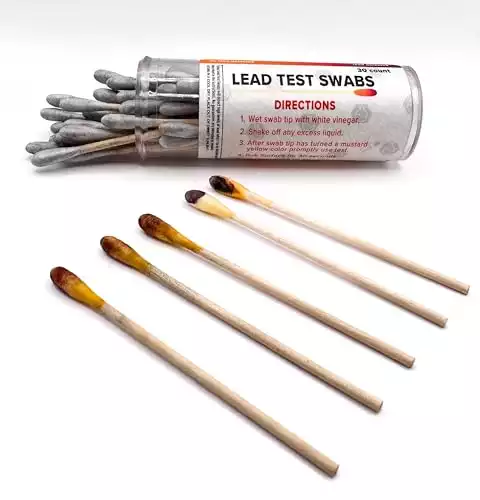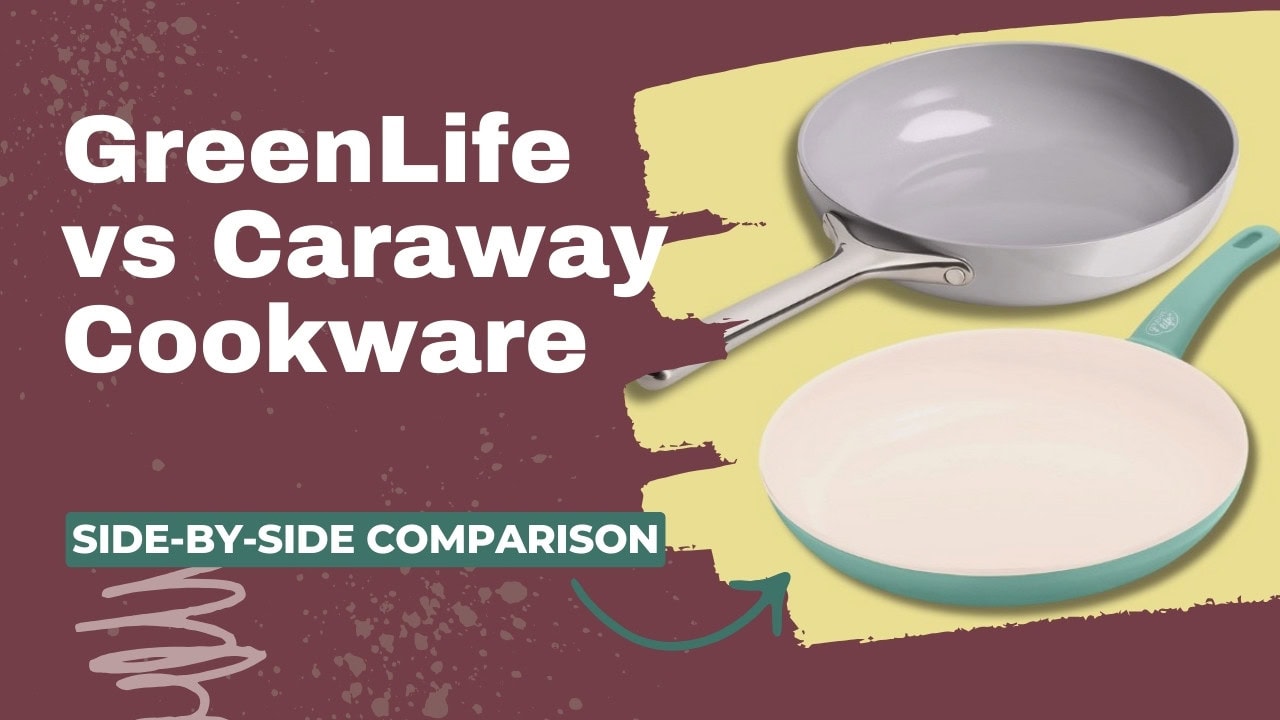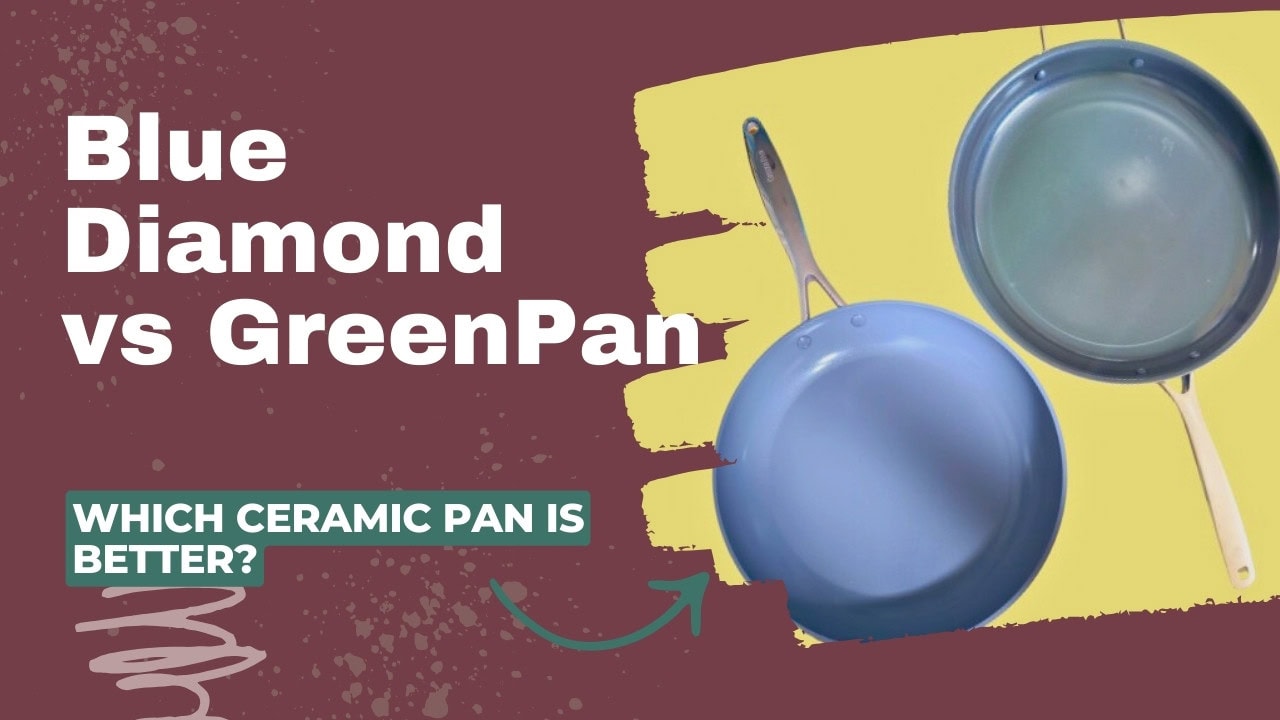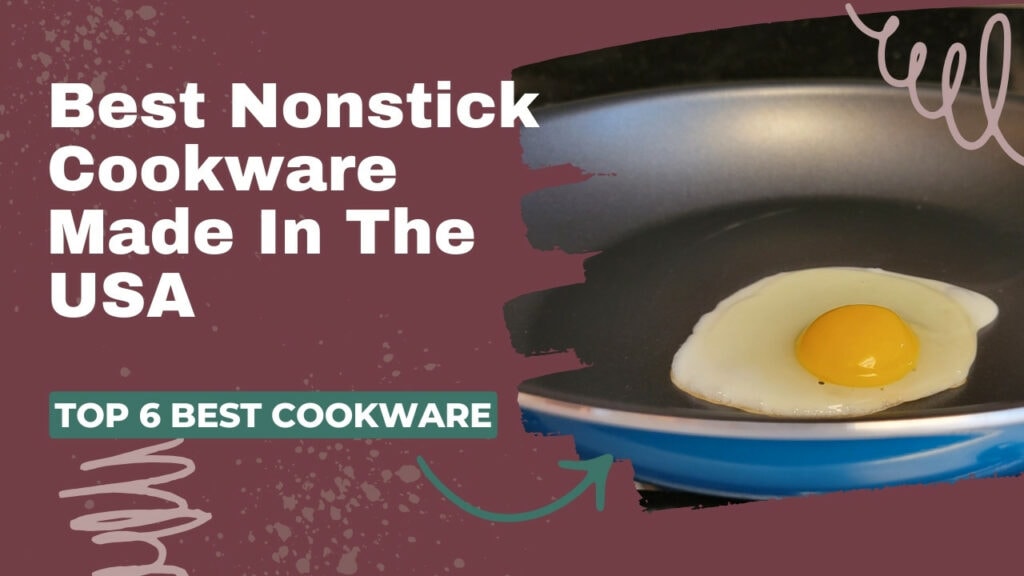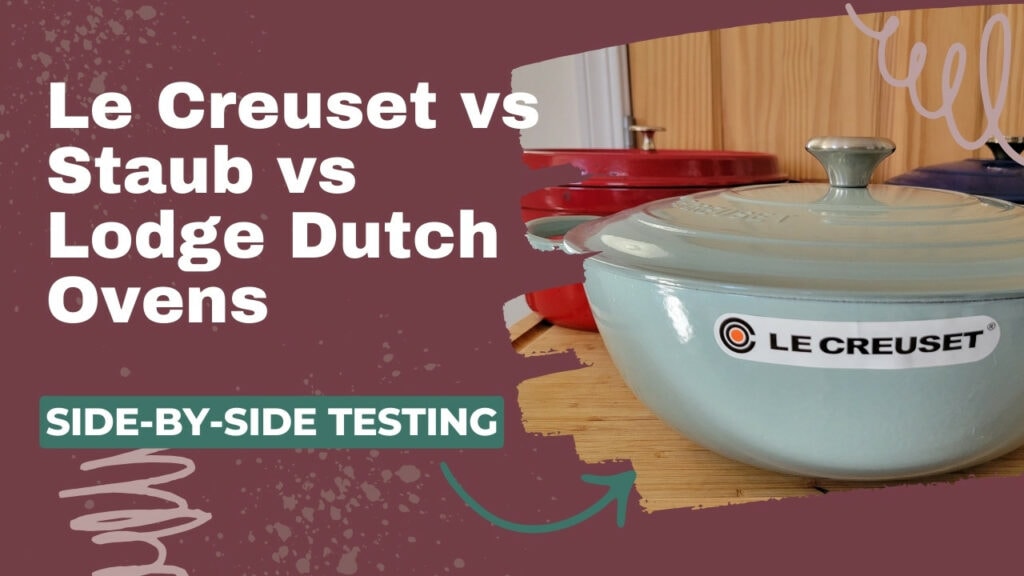The presence of lead in Dutch ovens is a concern for many health-conscious home cooks. In earlier times, cast iron Dutch ovens were used for at-home leadsmithing. And lead was used in the manufacturing of enameled Dutch ovens as a color enhancer.
The risk of leachable lead in modern cookware has been significantly reduced thanks to strict regulations and increased awareness of the dangers of lead. But how can you be sure if your Dutch oven is lead-free?
There are several different methods used to test Dutch ovens for lead – which I’ll describe below. At-home lead-testing swabs are the cheapest and simplest, so I decided to try them on several Dutch ovens. Whether or not this method is reliable for cast iron is up for debate, but we’ll discuss that, too.
To cover all the bases, I tested a new Le Creuset Dutch oven, a Lodge cast iron skillet, and a no-name brand hand-me-down Dutch oven to compare the results.
I’ll also give you a quick step-by-step if you want to test your own cookware.
Testing Dutch Ovens with Lead Swabs – Our Results
All of these tests were done using the Scitus Lead Test Swabs. I chose these because they are available on Amazon for a relatively affordable price, making them accessible to most people. When buying your swabs, make sure that the active ingredient is sodium rhodizonate.
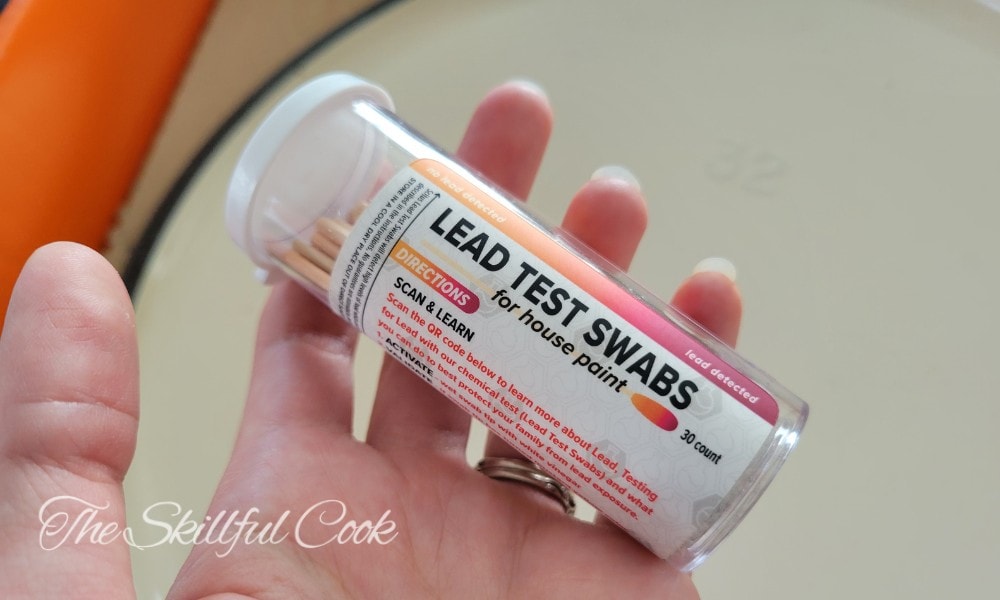
Firstly, I wanted to create a control so we can prove that these swabs do, in fact, work. So, I swabbed some lead fishing weights to put them to the test. The tests came out positive, so I was comfortable to continue with testing the cookware.
For reference, this is what a swab positive for lead looks like:
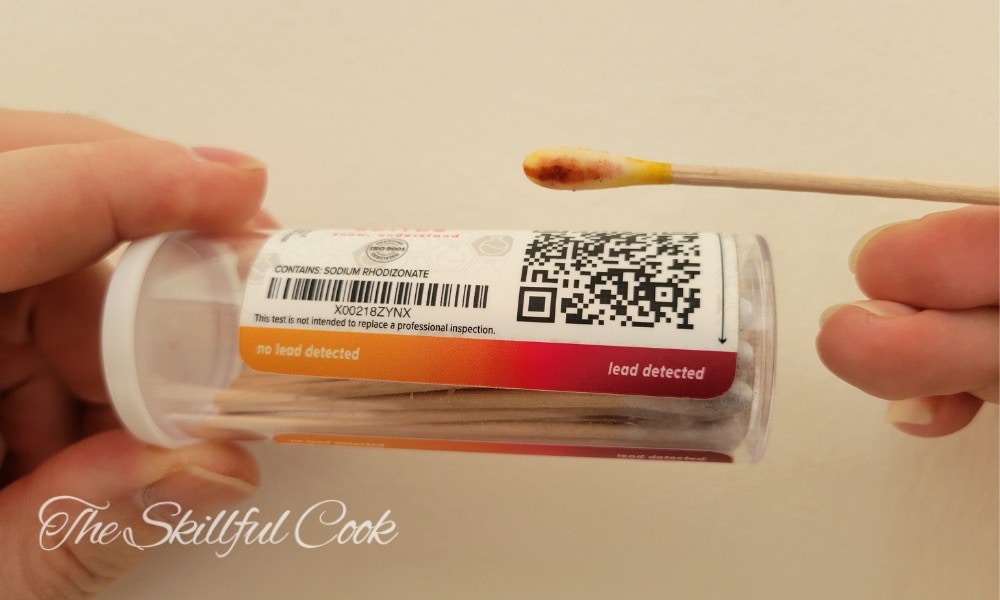
Testing a Le Creuset Chef’s Oven
The first piece of cookware I tested was a Sea Salt colored Le Creuset Chef’s oven from 2023.
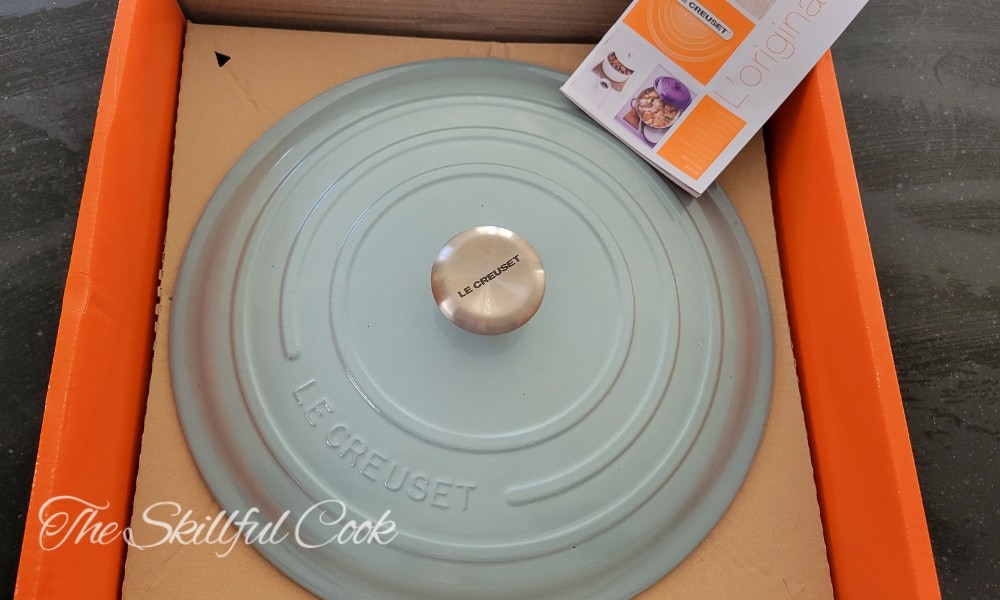
I tested both the interior and exterior multiple times with negative results.
These results are not surprising, as Le Creuset is California Prop 65 compliant, but it was informative anyway.
Lodge Cast Iron Skillet
Next, I moved on to the raw cast iron skillet from Lodge, a reputable name in the cast iron cookware scene. This pan has no porcelain enamel coating, and is only about 10 years old, so the likelihood of there being lead present is very low.

Again, I tested the interior and exterior multiple times and the results were negative.
Off-Brand Oval Dutch Oven
This is the Dutch oven that actually brought this article to fruition. I was given this red Dutch oven as a hand-me-down from my dad when I left home. There was no brand indicated (it’s even missing the knob on the lid), so I had no way of telling if it was from a safe brand or not.
As with the others, I tested the outside and the interior three times to be sure the results were correct. All the results came out negative.
How to Test Your Dutch Oven for Lead with Swabs
Testing cookware with lead swabs is very easy, but you need to be sure that you are using quality swabs to produce reliable results. I chose the Scitus tests because they are made in the USA with strict quality control.
Here is a simple how-to if you want to try this for yourself:
You will need:
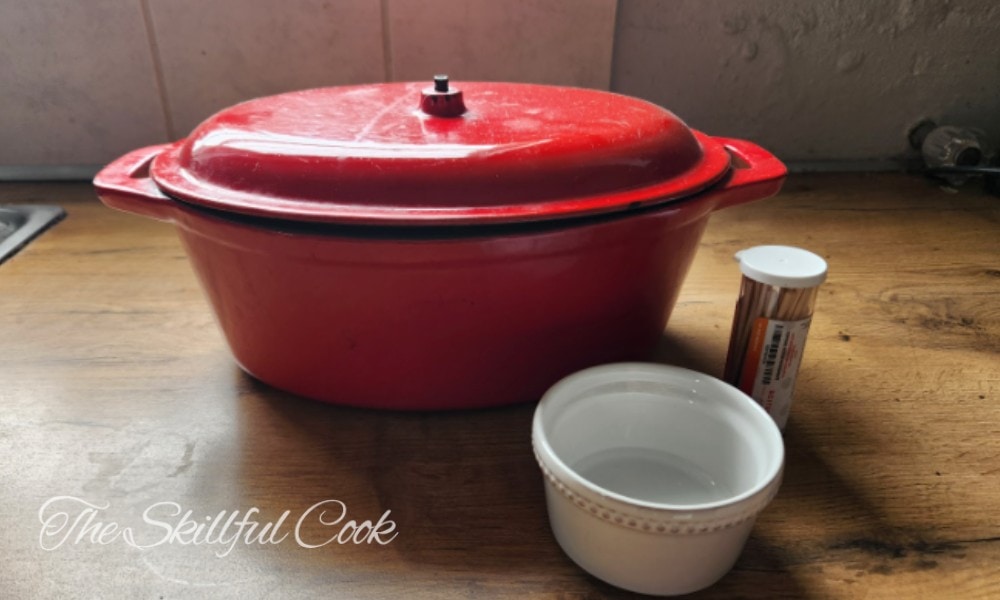
Step 1- Clean the Dutch Oven
Give the Dutch oven a quick wipe-down to remove any dust or food residue that could interfere with the test.
Pour a little white spirit vinegar into a ramekin.
Step 2- Soak the Swab
Remove a swab from the pack and dip it straight into the vinegar. Let it soak completely. The swab should turn a mustard-yellow color. Flick off any excess vinegar.
Step 3- Test the Inside and Outside
Rub the swab on the outside of the Dutch oven for 30 seconds. Use the scale on the side of the swab container to determine whether the swab is positive or negative for lead. If it doesn’t change color, no lead has been detected. If the swab turned a reddish purple shade, there is lead present.
Repeat the test on the outside with a new swab. Repeat the whole process on the inside.
This video by Cast Iron Cookware demonstrates a slightly different technique using a magic eraser:
Are Lead Swabs a Reliable Way to Test Cookware?
This is a hard question to answer definitely. If a piece has had direct contact with lead, like cast iron pans used to melt lead, these swabs should pick that up with no problem.
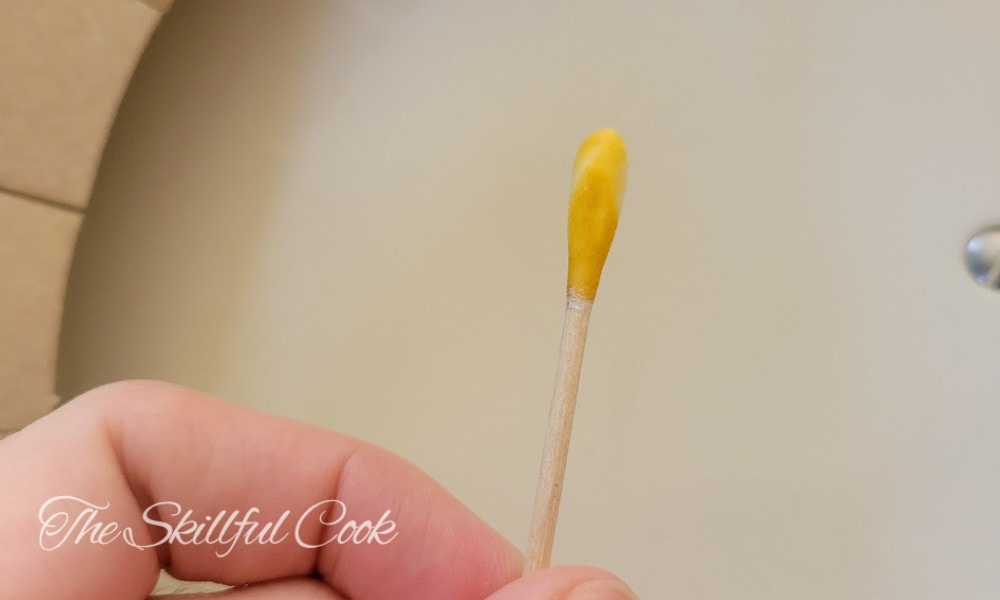
However, if there is a small amount of lead used in the glazing process, these swabs may be less effective. Since these swabs are intended for house paint and things of that nature, false negatives are a possibility, especially if the lead is incorporated into the enamel.
If you want to be completely sure your cookware is 100% lead-free, seeking other testing methods is necessary to confirm the swab results.
How Do You Test Cookware For Lead?
The three most common methods for testing cookware for lead are lab leach tests, XRF tests, and lead swabs. Lab tests are most reliable, but also the most expensive.
XRF Testing
One method used to test cookware for lead is with an XRF machine. XRF stands for X-ray fluorescence, and it takes the form of a handheld gun that, honestly, looks like something out of a sci-fi show. This machine uses gamma rays to read lead levels beneath the surface. If it picks up 1mg lead for square centimeters or over, there is lead present.
Assuming the device is calibrated correctly, an XRF machine can tell you if there is any lead present in the product’s molecular makeup. It does not tell you if any of that lead transfers to food cooked in the vessel.
This video from SciAps shows how they test for lead using their XRF machine:
Lab Testing
Lab testing takes a variety of different forms. You can simulate real-life lead leaching by cooking an acidic dish (like tomato sauce) in the pan for an extended period. Then, you collect a sample and send it off to a lab to test for lead. You should also send a control sample of sauce not cooked in your pan, to make sure the sauce didn’t have lead in it to begin with.
Or, you can send your physical cookware item to a lab for a controlled leach test. The lab will test your cookware to see if it leaches lead into vinegar or another solution. This kind of testing is usually done by manufacturers to ensure compliance with California Proposition 65. These tests can be very expensive and could damage your cookware.
What Dutch Ovens Are Most At Risk For Lead?
Lead is predominantly an issue with enameled cast iron because, in the past, lead was used during manufacturing to create a glossy enamel surface. Nowadays, most new enameled cast iron from well-known brands is considered either “lead-safe” (meaning it will not leach lead above California Prop 65 approved levels) or lead-free and will be labeled as such.
The issue comes in with off-brand pieces that have not been third-party tested or vintage pieces that were manufactured before the regulations against leachable lead.
No amount of leachable lead is permissible by the FDA, according to a 2023 guidance letter.
Leachable lead is a health risk in any cookware, but for Dutch ovens in particular, it is a risk because these vessels are designed for slow cooking, and the extended cooking time increases the risk of contamination.
FAQ
What Dutch Ovens don’t contain lead?
Regular cast iron Dutch ovens that are not coated in enamel will not contain lead unless they are very old and could have been used for lead-smelting at one point. From our research, we believe that Staub’s cocotte is the enameled cast iron Dutch oven most likely to be lead-free. In our swab tests, Le Creuset and other brands came up negative for lead as well.
What kind of Dutch ovens might have lead?
The Dutch ovens most likely to contain lead are vintage pieces made in or before the 1970s. There could also be traces of lead in Dutch ovens that are made in countries with less stringent lead testing regulations. Artisan ceramic cookware that is not commercially tested is notorious for lead contamination.
Conclusion
Testing your cookware with lead swabs is a good place to start with at-home testing, but it’s not 100% foolproof. Only buy Dutch ovens from reputable companies that state that they are lead-safe/lead-free and compliant with California Proposition 65.
Have you ever tried testing your cookware for lead at home? Let us know your experiences below.

